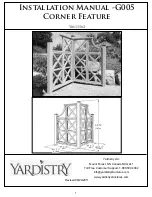
27
Multiple Measurements
The multiple measurements gives the user the ability to view the different measurements:
Top, Base, Min, Max, Fall/ Rise time, Peak to Peak, Eye Amplitude, Eye Height, Eye Width,
Jitter, and the crossing percentage for a number of measurements specified in the repetitive
box or for an undetermined number. Use the
Check All
text box to display all the
measurements.
Statistics
To enable repetitive data acquisition, and statistics measurements, the repetitive mode needs
to be checked or the numbers of acquisition in the counter box needs to be increased, then
the statistical measurements are shown and the following is displayed: Current value, average
minimum, maximum and the standard deviation of each measurement.
Filters
The DSO GUI platform comes equipped with useful filters that offer a variety of signal processing
techniques including cleaning the signal, de-embedding and discovering the optimal taps for
improving an NRZ or PAM4 signal. The filtering GUI can be used to adaptively detect the minimum
number of FFE or DFE taps required to reach a target Eye Height or SNR.
These filters can be applied to a DUT signal with or without introducing the
preserve noise
feature,
which compensates for the filter side effect of reducing signal noise of adjacent measurement
points. Please see
Appendix V
for more information regarding the preserve noise feature.
Click on the Filters button after a successful signal acquisition.
Extinction Ratio
The Extinction Ration is defined as the ratio
of the power levels of
the ‘1’ and the ‘0’ logic
levels of an NRZ signal. As it is a ratio of two
powers, it is depicted in dB.
TDEC
Transmitter and dispersion eye closure
(TDEC) is a measure in dB of an NRZ optical
transmitter’s vertical eye closure as if
observed at the end of a worst-case fiber. It
is based upon vertical histogram data from an
eye diagram measured through an optical to
electrical converter (O/E) with a bandwidth
equivalent to a combined Ref RX and worst-
case optical channel.















































